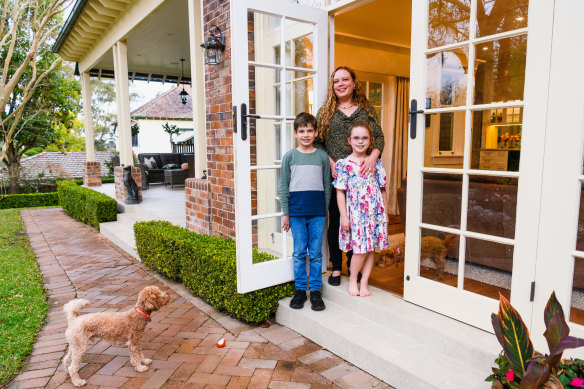This was published 3 months ago
The compromise that could save Sydney home buyers $290,000
Sydney property buyers could save up to $290,000 if they opted to purchase a house with one fewer bedroom.
A typical three-bedroom house in Sydney costs $1,191,800, some $289,200 cheaper than a house with four bedrooms, Domain data reveals.
That savings gap balloons to $463,550 if buyers opt for a two-bedroom unit instead of a three-bedroom unit. A typical two-bedder costs $795,000. A three-bedroom unit jumps to a median of $1,258,550, a sign of the dearth of larger apartments in Sydney and the intense competition for them.
Stronger demand for three-bedroom houses lifted their median by 8.3 per cent in the June quarter, compared to 5 per cent growth for a four-bedroom house, in the same period.
Domain chief of research and economics Dr Nicola Powell said more bedrooms usually means more bathrooms and multiple living spaces.
“You’re paying for more floor space. And we know that what adds value to a home is when you’re creating additional floor space,” she said.
“Eastern suburbs in Sydney and northern beaches are more so the four-bed homes. I do think it reflects the overall nature of a suburb, and some suburbs are likely to have more smaller dwellings, such as those two beds, than a three- or four-bedroom home.”
Eleven years ago, Felicity Davidson and her anaesthetist husband Fergus upsized from a two-bedroom in Russell Lea to a five-bedroom home in Pymble when Felicity was pregnant with their first child. They wanted more space and be close to coveted schools.
Over the past decade, they’ve raised their two children, Hamish, 10 and Julia, 7, hosted a Dutch exchange student and even had Felicity’s brother and his family live with them for a period. They were able to do all of this comfortably due to the large size of their five-bedroom property.
“We’ve got a playroom, we’ve got an office, we’ve got a formal lounge and a casual lounge. So we wanted space for the kids to have their own space and to be able to do their own thing,” Davidson said.

Felicity Davidson with her two children, Hamish and Julia, in their Pymble home. Credit: James Brickwood
After renovating their family home in Pymble, the family hopes to find another five-bedroom home. She enjoyed the renovation process of the home that had been theirs for over a decade and is looking forward to starting a new project.
Their selling agent, Rowan Lazar, of Ray White, said many buyers in the Pymble area have parents who assist with childcare and want homes suitable for multi-generational living.
Lazar said most buyers that come into the Ku-ring-gai area are upsizing from the eastern suburbs or the inner west.
“Where we are, so that’s from Roseville to Wahroonga, is characterised by 900-square-metre blocks, the houses are generally three to 400-square-metres, so you do get pretty much the largest blocks and homes in most of Sydney here,” he said.
Powell said Sydney has recorded the biggest price gap between a two to three-bedroom house than all other capital cities.
Thomas McGlynn, chief executive of BresicWhitney, has seen more people interested in an extra bedroom than extra floor space since the return of white-collar workers back to the office.
“Especially in the inner-city market, so inner city, terraces and apartments have been really, really popular in the last three to six months. And a lot of that’s been driven by people wanting to be back in the action and be around the restaurants and vibrancy of the city,” he said.
“There’s absolutely no doubt that people want space. This is why we saw a resurgence in apartments because people were compromising on a big space … they’re not in a position to buy a four-bedroom home, but they might be able to find a four-bedroom apartment.”
While there was a shift away from open-plan designs and a need for a separate home workspace during the lockdown era, Powell said those who were able to continue working remotely may choose to compromise on location.
But buyers who can’t afford extra space in Sydney are more likely to trade off house size instead.
”When it comes to a house, it’s the values in the dirt, and the assets appreciate over time, but I think it just showcases the premium for land in a city like Sydney,” she said.